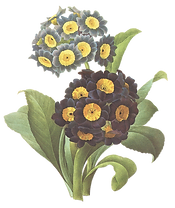Can’t Wait for Spring Cheerfulness?
- Cynthia Thomas
- Feb 20, 2018
- 3 min read
Impervious to snow and frost and often poking their colorful heads up through garden leaves and debris, crocus are one of the earliest bloomers. Even before the start of spring, these tiny perennials welcome warm afternoons with their jewel tones of yellow, cream and violet.
It’s no wonder that in the language of flowers, crocus means cheerfulness.
Arriving in Virginia last week and so very glad to escape icy New York, the very

warmest welcome was this pair of yellow crocus. A few years ago I gave myself an early birthday present (I’m a March baby) in October and planted a few bags of crocus corms. And unlike a new outfit or pair of shoes, this gift has a way of lifting my spirits year after year.
Of course, squirrels often dig below the ground for tasty morsels and I’m sure they’ve robbed my stash, however, one of the best things about this flower is that it “naturalizes” - meaning it spreads and comes back year after year—with minimum care—for an ever-larger display.
Crocus is a genus of flowering plants in the iris family comprising 90 species of perennials that grow from corms (much like a bulb, but technically different). While I tend to only notice them in spring, many are cultivated for their flowers appearing in autumn and winter. Interestingly, the spice saffron is obtained from the stigmas of Crocus sativus, an autumn-blooming species.
Crocuses are native to woodland, scrub, and meadows from sea level to alpine tundra. They prefer sunny, well-drained soil. The flowers and leaves are protected from frost by a waxy cuticle. It’s not uncommon to see early flowering crocuses unfazed by a light late snowfall like we had last Friday.
Crocus Planting Guide from The Old Farmer’s Almanac (almanac.com):
Before the ground freezes in the fall, early bulbs can be planted most anywhere, except in the dense shade on the north side of buildings.
Ideally, plant crocus corms 6 to 8 weeks before a hard frost is expected and when soils are below 60°F(16°C). This is usually during September and October in the North, and October and November in the South.
Make sure the soil drains well, because bulbs will rot in soggy ground.
Work in organic matter such as compost, peat or a substitute, such as shredded leaves to a depth of at least 10 inches.
Plant crocus bulbs 3 to 4 inches deep (with the pointy end up). After planting, water well.
Plant bulbs in groups or clusters rather than spacing them in a single line along a walkway or border. Single flowers get lost in the landscape. Plant a few inches apart, and plant in groups of 10 or more.
Plant taller bulbs and spring-flowering shrubs behind the early bulbs for color contrast.
Early-spring crocus needn’t be restricted to the flower bed. Just imagine a lawn filled with the delightful blooms. This look isn’t for the perfectionist, but if you love surprises and don’t mind waiting to mow until the leaves turn yellow, the thick carpets of color require surprisingly little care in the right conditions.
Or perhaps there is a spot in your lawn that’s sparse – possibly a spot under a deciduous tree or in a forgotten patch of lawn – where you could tuck some of these dainty perennials that resemble thick grass when they first emerge.
Garden, lawn or out on a walk, I hope today puts you in the path of cheerfulness.
And all the woods are alive with the murmur and sound of Spring,
And the rose-bud breaks into pink on the climbing briar,
And the crocus-bed is a quivering moon of fire
Girdled round with the belt of an amethyst ring.
–Oscar Wilde























Comments